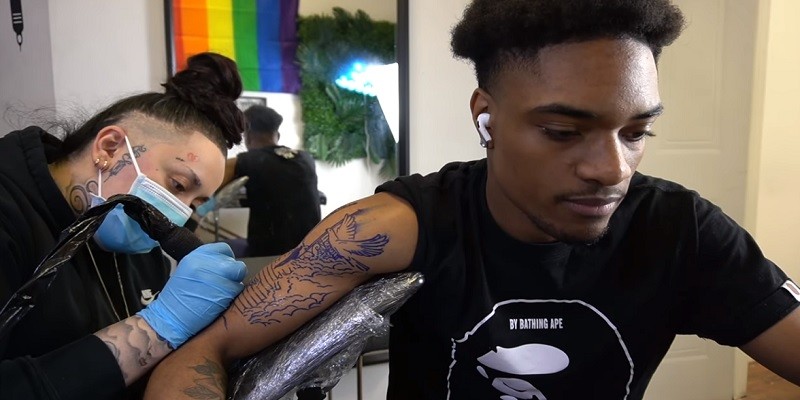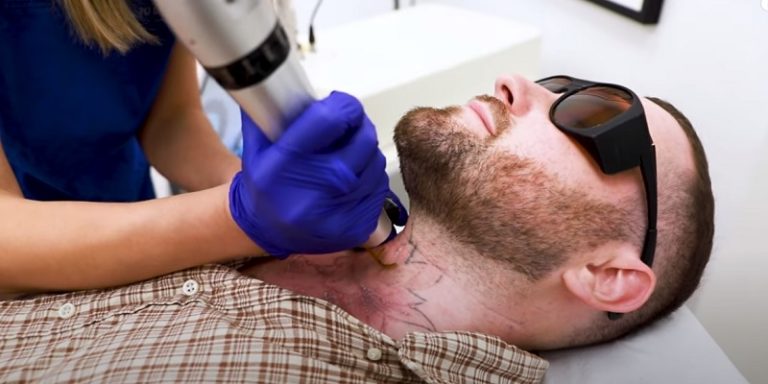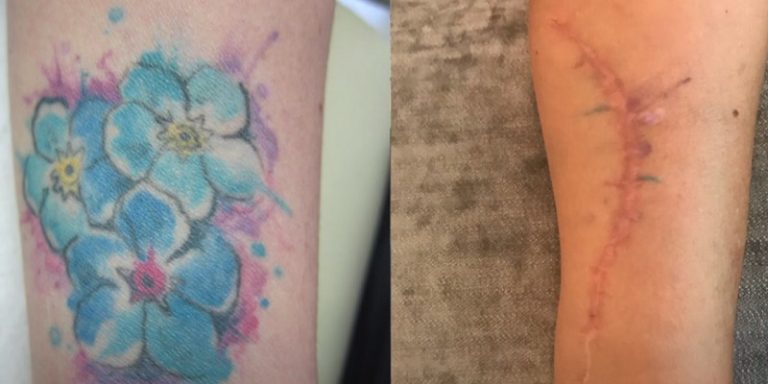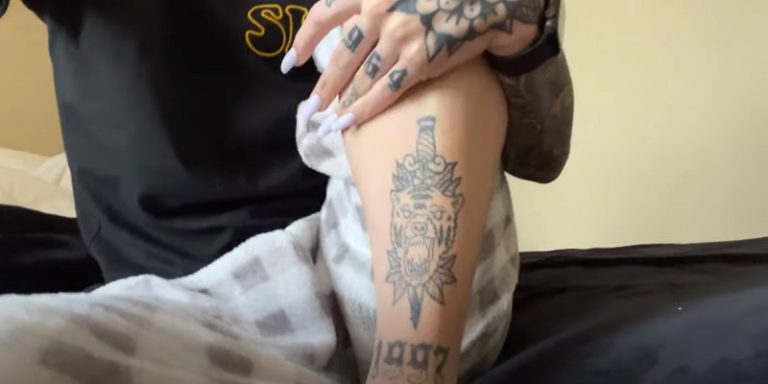What You Need To Know About Sleeve Tattoos?
Last Updated on June 18, 2025 by Jaclyn A. Neeley
Sleeve tattoos are a significant commitment that requires careful consideration. Factors such as commitment, pain tolerance, and finding the right artist should be taken into account.
Additionally, size, tattoo placement, and design are essential considerations for a successful sleeve tattoo.
Introduction To Sleeve Tattoos
Sleeve tattoos are a significant commitment that requires careful consideration. Factors such as commitment, pain tolerance, and finding the right artist are crucial. Size, tattoo placement, and design should also be taken into account to ensure a successful sleeve tattoo.
What Are Sleeve Tattoos?
Sleeve tattoos are a form of body art that covers a large portion of the arm, typically from the shoulder to the wrist. Unlike smaller tattoos, sleeve tattoos require a more extensive design and usually take multiple sessions to complete.
Popularity Of Sleeve Tattoos
Sleeve tattoos have gained immense popularity in recent years. Many individuals are choosing this form of body art as a way to express their creativity and showcase their personal style. The versatility of sleeve tattoos allows for a wide range of design options, from intricate and detailed artwork to bold and vibrant images.
Types Of Sleeve Tattoos
If you’re considering getting a sleeve tattoo, it’s important to know the different types available. Sleeve tattoos are designs that cover a large portion of the arm, resembling a sleeve. They can be a beautiful and impactful way to express your personality and style. In this article, we will explore three popular types of sleeve tattoos: half sleeves, full sleeves, and patchwork sleeves.
Half Sleeves
Half sleeves are a popular choice for those looking for a sleeve tattoo that is less extensive. As the name suggests, a half sleeve tattoo covers only half of the arm, typically from the shoulder to the elbow or from the elbow to the wrist. This type of sleeve allows for more flexibility in terms of design and placement. You can choose to have a cohesive theme or incorporate multiple smaller designs to create a unique and personalized look.
Full Sleeves
Full sleeves tattoos are a bold and dramatic choice for those who want to make a statement. A full sleeve tattoo covers the entire arm, from shoulder to wrist. This type of sleeve offers plenty of space for intricate and detailed designs. You can opt for a cohesive theme that tells a story or mix and match various elements to create a visually stunning piece of art. Keep in mind that full sleeve tattoos typically require multiple sessions to complete.
Patchwork Sleeves
For those who prefer a more eclectic and unconventional look, patchwork sleeves are a great option. Patchwork sleeves consist of smaller individual tattoos that are strategically placed to create a patchwork-like effect. This type of sleeve allows for a lot of creativity and experimentation with different styles, themes, and colors. It offers a unique and eye-catching aesthetic that can truly reflect your individuality.
Choosing A Sleeve Tattoo Style
Choosing a sleeve tattoo style is an exciting and personal decision. Your sleeve tattoo will be a permanent part of your body, so it’s essential to choose a style that reflects your personality and suits your individual preferences. In this section, we will explore three key aspects to consider when selecting a sleeve tattoo style: finding inspiration, consistency in design, and matching your body.
Finding Inspiration
The first step in choosing a sleeve tattoo style is finding inspiration. Tattoo art is incredibly diverse, with a wide range of styles to explore. Whether you prefer traditional, realistic, tribal, geometric, or illustrative designs, finding inspiration will help you narrow down your options.
Tattoo magazines, online galleries, and social media platforms like Instagram are excellent sources of inspiration. Follow tattoo artists who specialize in the styles you’re interested in and save images that resonate with you. Creating a visual collection will give your tattoo artist a clear understanding of your preferences when discussing your tattoo design.
Consistency In Design
Consistency in design is crucial when choosing a sleeve tattoo style. A cohesive and well-planned design will ensure that your sleeve tattoo looks harmonious and visually appealing. Consider the following factors:
- Theme: Decide on a theme or concept for your sleeve tattoo, such as nature, mythology, or Japanese culture. This will help create a consistent and meaningful design.
- Color palette: Choose a color palette that complements your theme and personal style. Vibrant hues or a more muted palette can both create striking sleeve tattoos.
- Flow: Ensure that the individual elements of your sleeve tattoo flow together seamlessly. This will create a visually cohesive design that enhances the overall impact.
Matching Your Body
Matching your body is an essential consideration when choosing a sleeve tattoo style. Different tattoo styles and sizes suit different body parts, so it’s crucial to select a design that complements your body’s contours and proportions.
A skilled tattoo artist can guide you in choosing the right placement and size for your sleeve tattoo. They will take into account factors such as your body shape, muscle structure, and any existing tattoos. This personalized approach will ensure that your sleeve tattoo enhances your body’s natural aesthetics.
Considerations Before Getting A Sleeve Tattoo
Before getting a sleeve tattoo, it’s important to consider factors such as commitment, pain tolerance, and finding the right artist. Additionally, size, tattoo placement, and design should be carefully thought out to ensure a successful sleeve tattoo.
Before diving into the world of sleeve tattoos, there are a few key considerations that you should keep in mind. Sleeve tattoos are a significant commitment that requires careful thought and planning. From the pain level to the artist selection, each aspect plays a crucial role in ensuring your tattoo experience is a positive one. In this article, we will explore some important factors you should consider before getting a sleeve tattoo.
Commitment And Pain Tolerance
Getting a sleeve tattoo is not a decision to be taken lightly. It requires a substantial commitment of time, money, and tolerance for pain. Sleeve tattoos are typically large and intricate, often consisting of multiple sessions spanning several weeks or even months. It’s important to ask yourself if you are willing to invest the necessary time and effort into completing your sleeve tattoo.
Pain tolerance is another crucial factor to consider. While pain is subjective and varies from person to person, it’s essential to have an idea of your pain threshold before getting a sleeve tattoo. Tattoos on the arm can be more painful than other areas due to the sensitivity of the skin. It’s important to mentally prepare yourself for the discomfort that comes with getting a sleeve tattoo.
Choosing The Right Artist
Selecting the right artist is perhaps the most critical decision you will make in the sleeve tattoo process. The artist you choose will ultimately determine the quality and outcome of your tattoo. Take the time to research and find an artist who specializes in sleeve tattoos and has a portfolio of impressive work.
Look for an artist who has experience in creating cohesive and visually appealing sleeve designs. Make sure to schedule consultations with potential artists to discuss your ideas, get their professional input, and ensure that you have a good rapport with them. Communication with your artist is vital, so don’t be afraid to ask questions, share your concerns, and bring your own ideas to the table.
Size And Placement
The size and placement of your sleeve tattoo are important factors to consider. The size of the sleeve will vary depending on your personal preference, as well as the complexity of the design. It’s important to discuss sizing options with your chosen artist to ensure that your vision aligns with what is feasible.
Additionally, the placement of your sleeve tattoo is something to think about. Consider factors such as your job, lifestyle, and your personal comfort level with visible tattoos. While sleeves can be worn proudly, it’s crucial to consider the impact it may have on your professional and personal life. Choosing a placement that can be easily concealed or modified, if necessary, is a wise decision.
Before getting a sleeve tattoo, take the time to carefully consider these factors. Commitment, pain tolerance, choosing the right artist, and deciding on the size and placement are crucial elements that will contribute to the overall success and satisfaction of your sleeve tattoo.
Healing And Aftercare Of Sleeve Tattoos
When it comes to sleeve tattoos, the healing and aftercare process is crucial for ensuring a successful and vibrant final result. Proper care and attention during the healing period can help prevent complications and promote optimal tattoo healing. In this section, we will discuss the important aspects of healing and aftercare of sleeve tattoos, including the recovery timeline, common issues, and their solutions.
Recovery Timeline
The recovery timeline for sleeve tattoos can vary depending on individual factors such as skin type, tattoo size, and the overall health of the person. However, here is a general outline of what to expect during the healing process:
- Week 1: During the first week, your tattooed area will likely be red, swollen, and sensitive. It may also ooze a small amount of clear fluid, which is a normal part of the healing process.
- Week 2-3: In the following weeks, your tattoo may start to scab and itch as new skin begins to form. It is important to resist the temptation to scratch or pick at the scabs, as this can lead to scarring or color loss.
- Week 4 and beyond: By this time, most of the scabs will have naturally fallen off, revealing the healed tattoo underneath. However, the skin is still internally healing, so it is essential to continue following proper aftercare to ensure the best long-term results.
Common Issues And Solutions
While the majority of sleeve tattoos heal without complications, it is not uncommon to experience a few issues during the healing process. Here are some common problems and their solutions:
| Issue | Solution |
|---|---|
| Excessive swelling | Apply a cold compress to the tattooed area for 10-15 minutes, several times a day. Elevate your arm to reduce swelling, and avoid activities that can cause further inflammation. |
| Infection | Clean the tattooed area twice a day using a mild, fragrance-free soap. Apply an antibacterial ointment and cover the tattoo with a sterile bandage until it is fully healed. If you notice signs of infection such as severe redness, pus, or fever, seek medical attention immediately. |
| Color fading or patchiness | Follow proper aftercare instructions provided by your tattoo artist to ensure optimal color retention. Avoid exposing your tattoo to direct sunlight, chlorine pools, or harsh chemicals during the healing process. |
| Itching | Avoid scratching your tattooed area, as this can disrupt the healing process and lead to scarring. Instead, gently pat or tap the itchy area with clean hands. Apply a fragrance-free lotion or a specialized tattoo aftercare product to alleviate itching. |
By being aware of these common issues and following the recommended solutions, you can ensure that your sleeve tattoo heals properly and looks its best in the long run.
Frequently Asked Questions Of What You Need To Know About Sleeve Tattoos?
What Do I Need To Know Before Getting A Sleeve Tattoo?
Before getting a sleeve tattoo, you should consider the commitment, pain tolerance, and finding the right artist. Communication with the artist is important, so feel free to ask questions and bring ideas. It’s recommended to get a good night’s sleep before a long session.
The healing process can take several weeks, with redness, itchiness, and peeling. Carefully consider the size, placement, and design to ensure a successful sleeve tattoo.
What To Expect After Getting A Sleeve Tattoo?
After getting a sleeve tattoo, expect a healing process that includes redness, oozing, itchiness, and peeling for a few weeks. It may take a month for the skin to fully heal internally. Communication with your artist is important, and a good night’s sleep before long sessions is recommended.
What Makes A Good Arm Sleeve Tattoo?
A good arm sleeve tattoo requires careful consideration of size, placement, and design. It’s important to think about factors like commitment and pain tolerance. Finding the right artist and communicating effectively is crucial. Sleep well before long sessions, as tattoos take time to heal properly.
How Long Does A Sleeve Tattoo Take To Heal?
A sleeve tattoo takes several sessions to complete and the healing process can take several weeks to a month. It’s important to communicate with your artist and ask any questions or address concerns. Getting a good night’s sleep before a long session is recommended.
What Are The Different Types Of Sleeve Tattoos?
Sleeve tattoos can be full, half, or quarter sleeves, depending on the coverage and placement on the arm.
How Long Does It Take To Heal A Sleeve Tattoo?
The healing process for a sleeve tattoo typically takes around 2 to 4 weeks, but complete healing can take up to a month or longer.
Conclusion
Sleeve tattoos are a significant commitment that requires careful consideration. Factors such as commitment, pain tolerance, and finding the right artist are crucial to think about. The size, placement, and design of the tattoo also play vital roles in ensuring a successful sleeve tattoo.
So, if you’re considering getting a sleeve tattoo, make sure you take these considerations into account.







